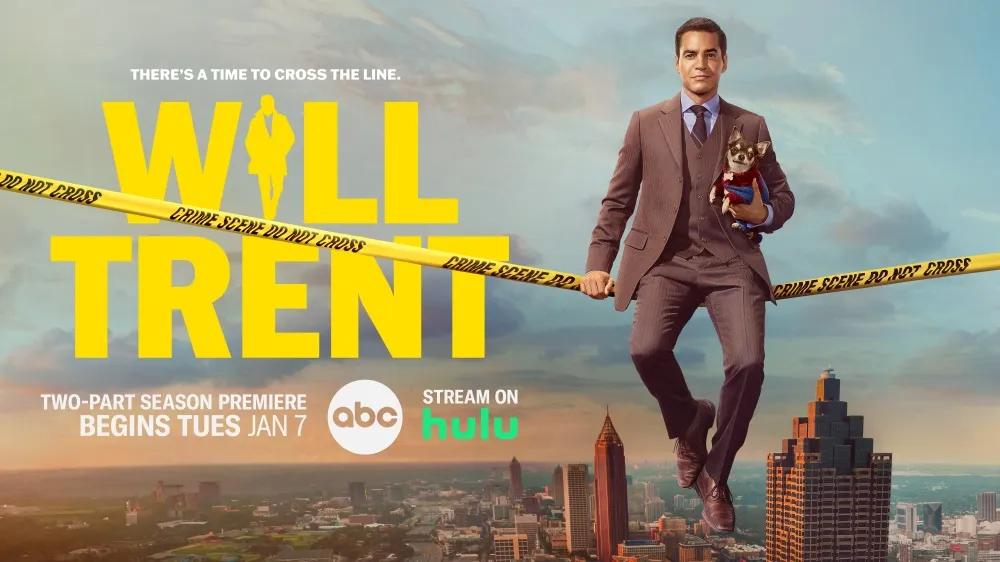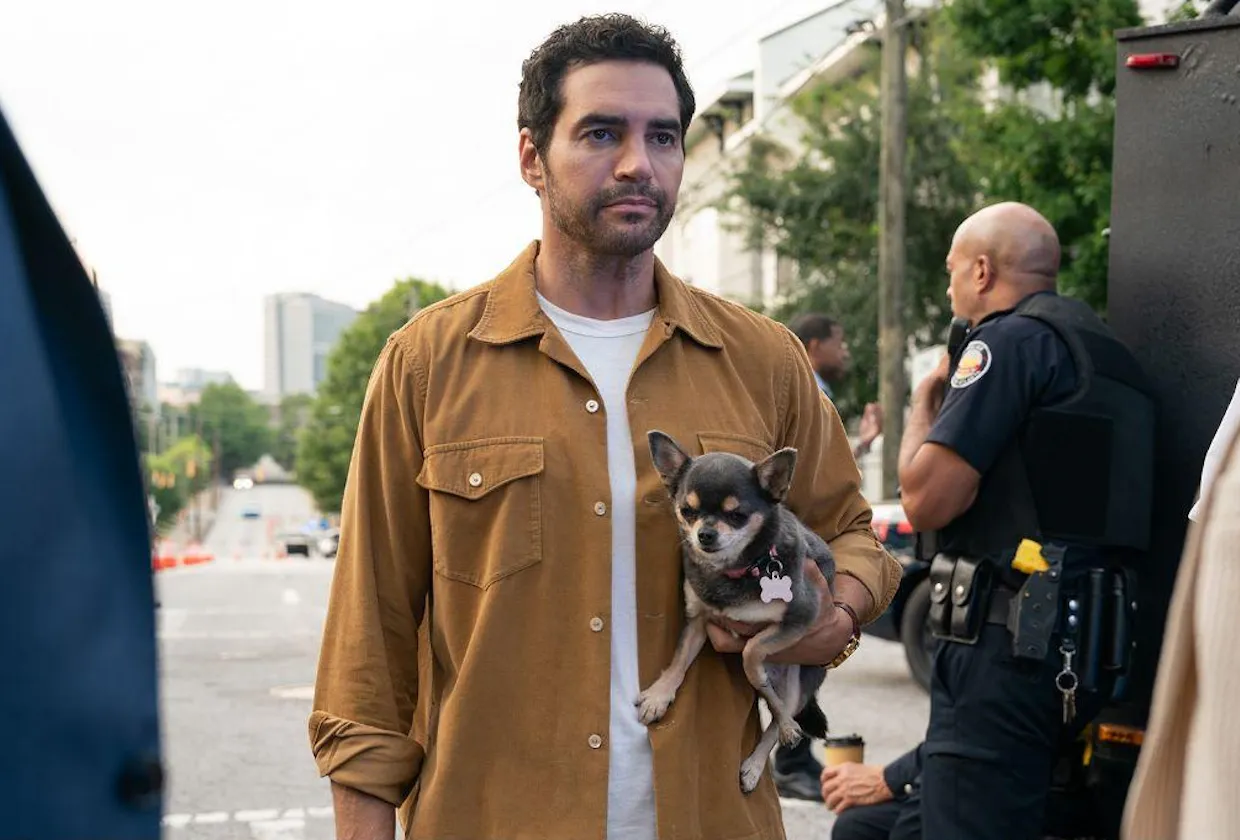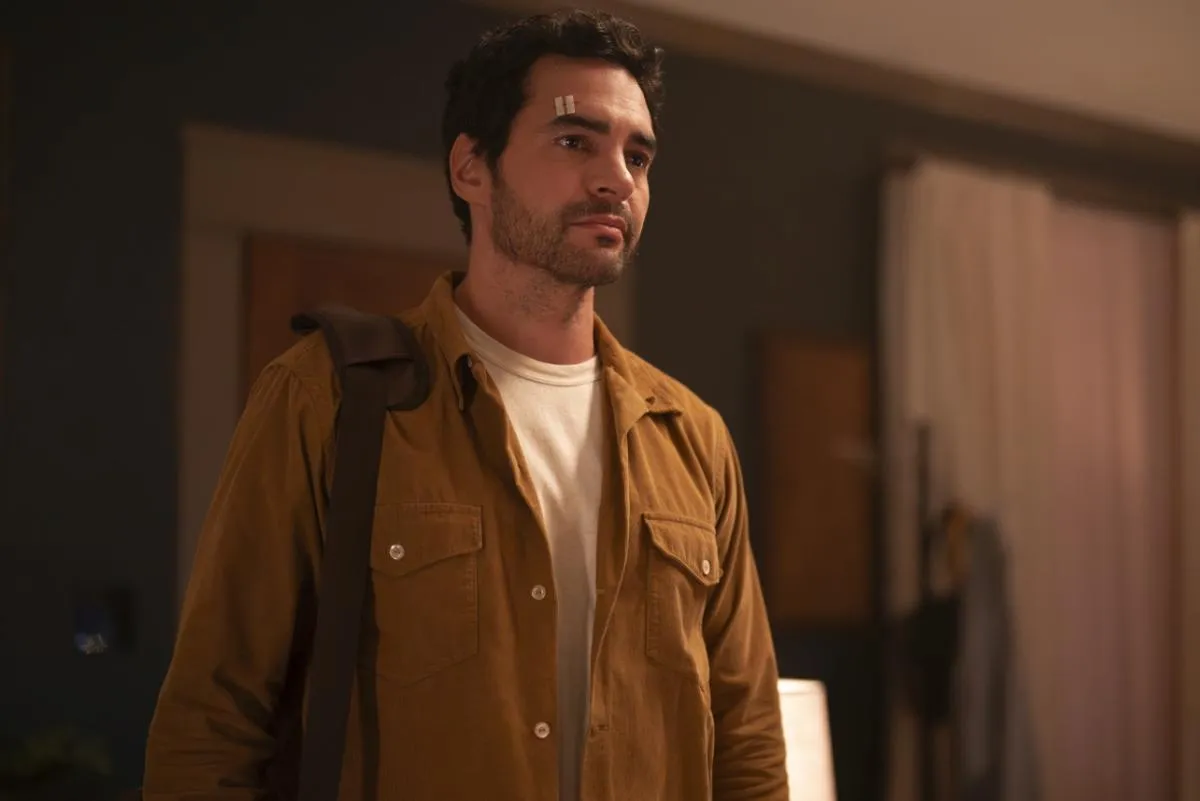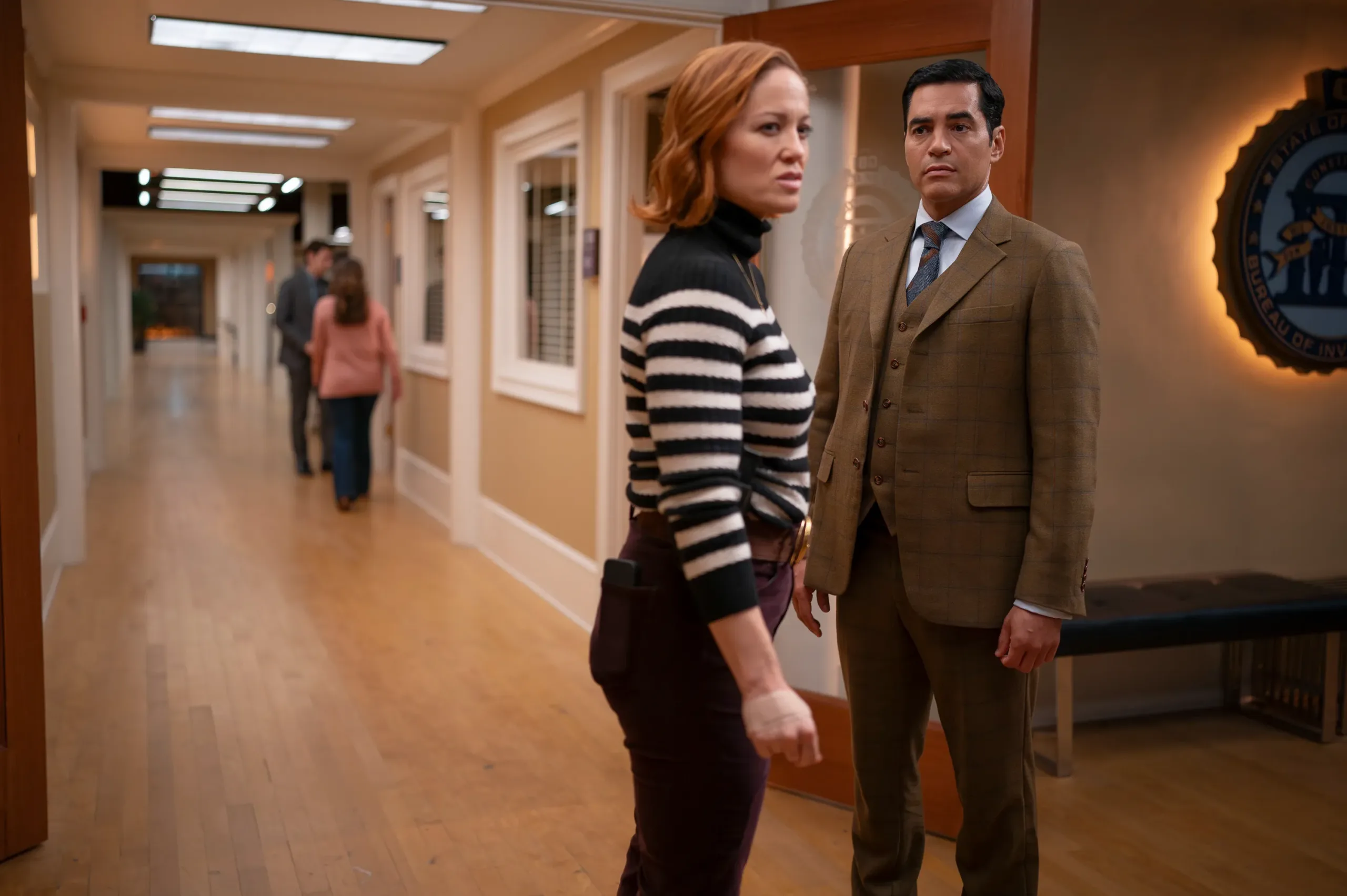Season 3 emerges with a deliberate pace, drawing a clear line between past turmoil and a future reassembled. The narrative resets six months after previous events, establishing an interlude that amplifies the tension inherent in Will Trent’s journey.
The season repositions the protagonist, coaxed back from a quieter existence in Tennessee by an irresistible pull toward Atlanta—a city that has been as much a character as the agents who navigate its streets.
An opening shot beneath a shimmering pool introduces a scene where festivity is abruptly marred by unforeseen tragedy, a moment that colors the season with an undercurrent of imminent conflict. Lighting and carefully chosen settings contribute to a world where every detail hints at deeper investigations and unresolved chapters.
The investigation re-engaging Will Trent is carefully framed within the institutional realms of the GBI and APD, setting the stage for an inquiry steeped in personal consequence and public duty.
The series recalls its storied past through Will Trent’s evolution—merging the weight of a troubled history with a methodical, if restrained, commitment to justice. Each visual and narrative cue plays its part, setting up an exploration that feels both inevitable and richly layered.
Intricate Narratives and Layered Plots
The structure of this season unfurls with a deliberate cadence, intertwining a complex network of threads that challenge the viewer’s expectations.
The narrative arc unfolds steadily, inviting audiences to follow a series of interconnected mysteries that gradually intensify. A measured pace underpins the storytelling, where the gradual build-up of tension finds its counterpoint in sudden, sharply executed twists that punctuate the storyline with surprising shifts.
Individual investigations serve as essential components of the overall narrative, each case acting as a window into deeper character studies.
These self-contained investigations intersect with long-standing personal histories, with episodic challenges revealing facets of Will Trent’s character and the intricacies of his personal entanglements. The shift toward a more character-focused narrative appears deliberate, as the focus moves from isolated crime-solving scenarios to the intimate struggles and alliances among the team members.
A series of plot twists drive the narrative forward, inviting a re-examination of past decisions such as Will’s unexpected departure and the unresolved issues surrounding Angie.
These revelations are not isolated events; they reverberate through the ongoing conflicts, enriching the narrative by layering past events onto present dilemmas. Unresolved threads hint at a future where current ambiguities will demand resolution, setting the stage for further exploration of ethical and personal conflicts.
Interwoven subplots create a textured narrative that captures both the professional challenges and the personal tensions within the investigative units.
The internal dynamics among the GBI and APD characters emerge as a critical force, with supporting figures playing decisive roles in advancing the mystery. Their interactions, often charged with unspoken histories and latent conflicts, contribute to a narrative environment that feels simultaneously intricate and provocative.
Interwoven Destinies
Will Trent emerges as a figure defined by layered contradictions, his transformation capturing a collision of professional resolve and personal scars. He presents as a dedicated investigator whose inner turmoil shapes a narrative of relentless pursuit tempered by past hardships.
His evolution from a steadfast figure to one grappling with deep-seated ethical dilemmas reveals a character whose every decision is colored by memories of prior missteps and a painful history that continues to haunt his choices.
The interplay between Will and Angie Polaski serves as a study in complexity, their relationship reflecting decades of shared history and the lingering influence of unresolved traumas.
Their interactions carry the weight of former bonds, punctuated by moments that expose both vulnerability and steadfast determination. This connection anchors much of the narrative’s emotional intensity, inviting scrutiny into how past alliances can shape present-day conflicts.
Supporting characters such as Faith, Amanda, and Ormewood enrich this narrative through subtle yet impactful contributions. Their evolving roles illustrate a sophisticated network of professional duty intermingled with personal loyalties, each interaction adding nuance to the broader storyline.
Every gesture and word exchanged among these figures reinforces the sense of a well-practiced ensemble, where the collective narrative gains strength from individual intricacies.
Gina Rodriguez’s introduction into the cast injects a fresh perspective that disrupts established dynamics, presenting a counterbalance to longstanding relationships. Her presence creates a palpable tension, inviting questions about shifting allegiances and the reordering of long-held hierarchies.
Individual arcs, interlaced with personal redemption and professional obligations, underscore a narrative where conflicts are as much internal as they are external, offering a reflective glimpse into the human condition rendered on screen.
Emblems of Intricacy
Trust and betrayal play out as a silent language among characters, weaving a delicate yet resolute interplay that anchors the narrative. The shifting allegiances, especially in the dealings of Will Trent, reveal the consequences of fractured promises and the heavy burden of former missteps.
Every fractured trust carries echoes of past betrayals that ripple through current conflicts, painting relationships in shades of ambiguity and latent tension.
The reverberations of childhood scars and past hardships add a profound layer of complexity to character decisions. These echoes manifest in subtle narrative gestures and in moments of stark vulnerability on screen.
Trauma, reawakened in each calculated step and unexpected glance, marks the characters with a gravity that demands recognition. This ongoing influence of bygone eras is both rendered visually and etched into the dialogue, lending a poetic intensity to the unfolding drama.
Recurring visual markers punctuate the storyline with symbolic weight. A pool shimmering under uncertain light, a precisely framed flatscreen, or even a seemingly inconsequential pet carry connotations that enhance the narrative’s subtext. Such images serve as silent narrators, quietly reinforcing themes of isolation, exposure, and the unyielding passage of time.
The ethical dilemmas encountered by Will Trent and his cohorts resist simplistic categorizations. The narrative introduces challenges that do not conform to binary distinctions, inviting a reexamination of what is right and what is necessary. The resulting moral quandaries add a textured layer of complexity that propels character evolution and plot advancement.
The series also projects a thoughtful examination of societal constructs through its diverse representation. Multifaceted characters navigate an environment filled with subtle social critiques and reflections on identity, contributing to a portrayal that is rich in nuance and depth.
This blend of visual storytelling and intricate character interplay captures the spirit of a modern cultural narrative, layered in meaning and evocative in its execution.
Crafting a Visual Symphony
The director’s method in this season displays a refined control of visual storytelling and narrative form. Every scene appears carefully orchestrated, with deliberate choices in framing and timing that heighten the tension without resorting to overt theatrics.
The stylistic decisions shape a world where the camera glides through urban settings and intimate spaces with a precision that captures both the grit and the grace of the narrative.
The script strikes a balance between methodical procedure and lively dialogue that reveals character depth. The conversations spark life into the narrative, infusing a natural rhythm that aligns seamlessly with the unfolding mystery. The dialogue, precise and crisp, mirrors the inner workings of the characters without resorting to cliché, bringing an unmistakable energy to every exchange.
Cinematography plays a vital role in transforming everyday locales into canvases of rich emotion and subtle nuance. Careful attention to lighting transforms familiar settings into dynamic stages where shadows and light converse, adding depth to the unfolding drama. The interplay of close-ups and wide shots crafts moments that linger, inviting a closer examination of the story’s visual vocabulary.
Sound contributes an essential layer to this production. The selection of musical cues and ambient sound creates an auditory landscape that intensifies dramatic moments and underscores thematic turns. A few deliberate musical choices resonate throughout, leaving an imprint on the atmosphere that is both evocative and precisely tuned to the narrative’s pulse.
The ensemble cast offers performances that reinforce the authenticity of the storytelling. Ramón Rodríguez and Erika Christensen, among others, display an unwavering command of their roles. Their portrayals capture a spectrum of subtle emotions, delivering lines with an assuredness that solidifies the connection between character and viewer, and enriches every moment on screen.
Emerging Trajectories
Season 3 reinvents the series’ longstanding narrative, presenting fresh conflicts while honoring its storied past. The reassembly of familiar threads with unexpected deviations manifests a narrative landscape that challenges established formulas.
This season unspools a rich fabric of unresolved questions and open storylines, where the tension of past decisions weaves itself into the unfolding drama, setting the stage for potential character arcs and unforeseen developments in future installments.
Lingering threads—subtle omissions from previous chapters—carry an air of anticipation as key relationships and institutional pressures hint at consequences yet to be revealed. The script crafts these ambiguities into a deliberate pause, inviting speculation on the evolution of complex partnerships and ideological divides.
The persistent undercurrent of unresolved dilemmas creates a narrative space where the unforeseen becomes a narrative device, inciting both introspection and debate among viewers.
The collective dynamics among the principal cast and their supporting counterparts drive much of the forward momentum. The interplay between central figures and the ensemble enriches the storyline with nuanced exchanges that push narrative momentum.
Characters who previously appeared peripheral now emerge with heightened significance, their interactions fostering a milieu in which personal loyalties and professional obligations shape future plot lines.
Risks taken in narrative experimentation invite a reconsideration of character dynamics and narrative structure. Unconventional choices in storytelling disrupt expected rhythms, presenting unforeseen challenges that, while carrying inherent risks, promise rewards in the form of renewed dramatic tension.
These innovations provoke an engagement that is both thoughtful and animated, leaving an impression that resonates across each carefully crafted scene.
The season leaves open a spectrum of possibilities, its evolving narrative inviting a continuing dialogue on the interplay of legacy and innovation, with each narrative strand poised to influence forthcoming chapters.
The Review
Will Trent Season 3
Season 3 of Will Trent emerges as a sophisticated evolution, blending procedural grit with deep character complexity. Its inventive narrative and striking visuals enrich a well-established legacy while daring to explore new thematic territory. Each twist and dynamic interplay invites viewers into a layered, thoughtful experience that both honors its origins and pushes creative limits.
PROS
- Deep, multi-dimensional character development
- Intricate, layered narrative structure
- Striking visual style and cinematography
CONS
- Pacing may feel uneven at times
- Some unresolved threads might frustrate viewers




















































